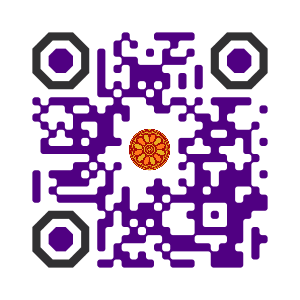
:: International Transaction Journal of Engineering, Management, & Applied Sciences & Technologies
http://TuEngr.com

ISSN 2228-9860
eISSN 1906-9642
CODEN: ITJEA8
FEATURE PEER-REVIEWED ARTICLE
Vol.11(15) (2020) |
-
Structural Changes in Russian Exports
 Oksana N. Berduygina (Department of Business Informatics and Mathematics, Tyumen Industrial University, RUSSIA).
Oksana N. Berduygina (Department of Business Informatics and Mathematics, Tyumen Industrial University, RUSSIA).
Disciplinary: International Business Management & Trade Policy, Economic Science.
DOI: 10.14456/ITJEMAST.2020.299
Keywords: Export potential; Commodity structure; Export diversification; Economic growth; Structural changes; Sustainable development.
AbstractSustainable economic development does not only have the export volume and growth rate, but also its qualitative structure. This problem confirms that non-energy commodity exports need encouragement. Recent economic crises have shown that the fragile economic growth in Russia strongly depends on volatile conditions in global commodity markets. They also have accentuated a need in priority rethinking. This research explores the dynamics of the commodity structure in Russian exports in 2008-2019. Having evaluated the export potential and structural changes, we identified key trends that the export structure diversification was slight. There were the largest positive structural changes in groups of foods and agricultural raw materials, metals and metal products, textiles, textile products, and shoes. There was a decrease in export shares of mineral and chemical products, machinery, equipment, and vehicles. 2015-2016 became a turning point for export structural changes. The data obtained show that export growth rates exceed growth rates of GDP and those in the share of non-energy non-resource exports. At the same time, in terms of the export quota, the involvement in international trade is mild-moderate. In value terms, in the period under review, Russian exports revealed a steady trend towards contraction. In the medium and long term, the commodity status of Russian exports dominates against the background of changes to priority commodity groups. We obviously need a transition to another type based on the growth in the sectors that are a part of the inward-oriented group.Paper ID: 11A15K
Cite this article:
Berduygina, O.N. (2020). Structural Changes in Russian Exports. International Transaction Journal of Engineering, Management, & Applied Sciences & Technologies, 11(15), 11A15K, 1-11. http://doi.org/10.14456/ITJEMAST.2020.299
References:
Chernova, V.Yu. (2017). Import substitution and reproduction potential of modernization: Problems and prospects. (Upravlenet, 2, 12-20.
Corey, J. & McMahon, F. (2009). Development in US States, Economic Freedom, and the 'Resource Curse'. Fraser Institute Studies in Mining Policy. DOI: 10.2139/ssrn.1816802
El'kin, V.A., El'kin, I.V. (2011). Export Potential in the Development of Territorial Economic Systems. BSUEL Publishing House.
Frolov, I.E., Lebedev, K.K. (2007). Assessing the impact of high-tech exports on growth rates and structure of Russian economy. Problemy Prognozirovaniya, 5(104), 62-76. DOI: 10.1134/S107570070705005X
Guerson, A. et al. (2007). Export structure and growth: a detailed analysis for Argentina. World Bank Policy Research Working Paper Series, 4237.
Guriev S. et al. (2007). Media freedom, bureaucratic incentives, and the resource curse. Voprosy Ekonomiki, 4, 4-24. DOI: 10.32609/0042-8736-2007-4-4-24
Guriev, S., Sonin, K. (2008). Economics of the "resource curse". Problems of Economics, 4, 61-74. DOI: 10.32609/0042-8736-2008-4-61-74
Hadili, A. et al. (2016). Trade liberalization in Arab Maghreb Union countries. Journal of Eurasian Economic Dialogue, 1(3), 14-27.
Hausmann R. (2003). Economic development as self-discovery. KSG Working Paper, RWP 02-023. DOI: 10.1016/S0304-3878(03)00124-X
Hausmann, R., & Klinger, B. (2006). Structural Transformation and Patterns of Comparative Advantage in the Product Space. DOI: 10.2139/ssrn.939646
Hesse, H. (2009). Export Diversification and Economic Growth. Breaking into New Markets: Emerging Lessons for Export Diversification. The World Bank Group, 55-81.
Kalinin A.M. (2019). Export potential of Russian economy: targets and requirements to public policy. Problemy Prognozirovaniya, 175(4), 148-158. DOI: 10.1134/S1075700719040063
Kaukin, A., Freinkman, L. (2009). Structure and productivity of Russian exports. Ekonomicheskaya Politika, 5, 99-117.
Kheyfets, B. A., & Chernova, V. Yu. (2019). Export-oriented import substitution potential in agro-industrial complex of the EAEU. Voprosy Ekonomiki, 4, 74-89. DOI: 10.32609/0042-8736-2019-4-74-89
Protasov, D.N. (2019). The study of the neoclassical Solow growth model in the economy. Science and Business: Development Path, 7(97), 167-170.
Sarsembekova, S.E. (2004). Export-oriented Production Facilities in the System of World Economic Relations: Theory and Practice. S. Toraighyrov Pavlodar State University.
Sachs, J.D., & Warner, A.M. (1995). Natural resource abundance and economic growth. In NBER Working Paper Series, Working Paper ? 5398. National Bureau of Economic Research. DOI: 10.3386/w5398
Samuelson, P.A. (1953). Prices of factors and goods in general equilibrium. Review of Economic Studies, 21(1), 1-20. DOI: 10.2307/2296256
Sivelkin, V.A., & Kuznetsova, V.E. (2002). Statistical Analysis of Structure of Socio-economic Processes and Phenomena. Orenburg State University.
Spiridonova, N.V. (2013). Theoretical Analysis of Economic Systems. Piter.
Vosylius, E. et al. (2013). Economic growth, sustainable development, and energy security interrelation. Journal of Security and Sustainability Issue, 2(3), 5-14.
Other issues:
Vol.11(14)(2020)
Vol.11(13)(2020)
Vol.11(12)(2020)
Vol.11(11)(2020)
Vol.11(10)(2020)
Vol.11(9)(2020)
Vol.11(8)(2020)
Vol.11(7)(2020)
Vol.11(6)(2020)
Vol.11(5)(2020)
Vol.11(4)(2020)
Vol.11(3)(2020)
Vol.11(2)(2020)
Vol.11(1)(2020)
Archives
Call-for-Papers
Call-for-Scientific Papers
Call-for-Research Papers: ITJEMAST invites you to submit high quality papers for full peer-review and possible publication in areas pertaining engineering, science, management and technology, especially interdisciplinary/cross-disciplinary/multidisciplinary subjects.
To publish your work in the next available issue, your manuscripts together with copyright transfer document signed by all authors can be submitted via email to Editor @ TuEngr.com (no space between). (please see all detail from Instructions for Authors)
Publication and peer-reviewed process:
After the peer-review process (4-10 weeks), articles will be on-line published in the available next issue. However, the International Transaction Journal of Engineering, Management, & Applied Sciences & Technologies cannot guarantee the exact publication time as the process may take longer time, subject to peer-review approval and adjustment of the submitted articles.